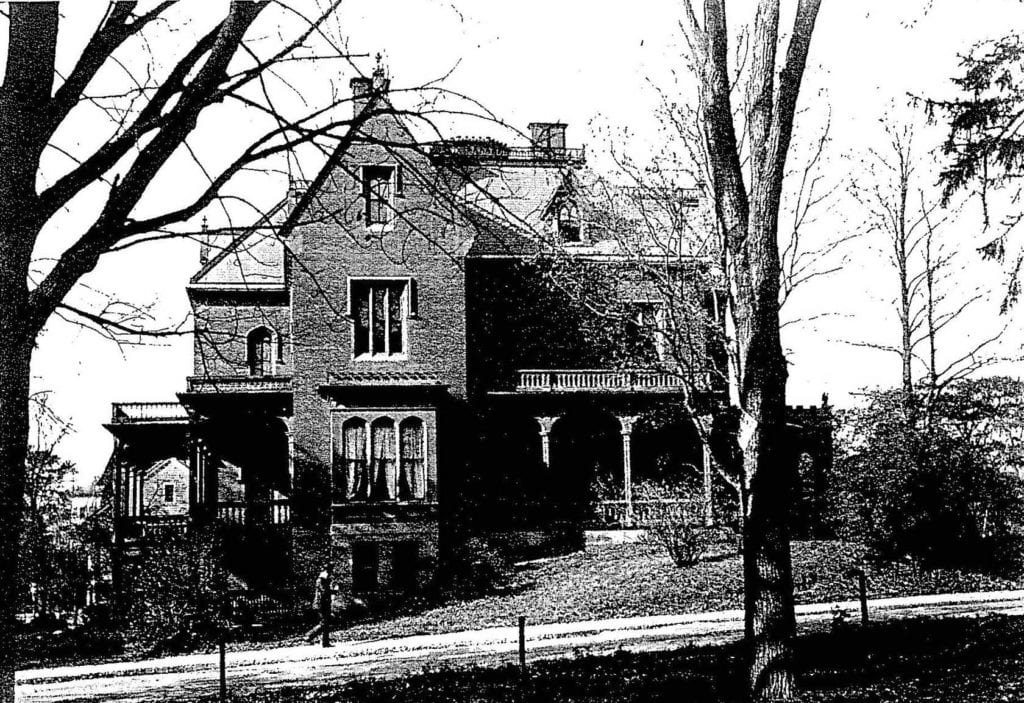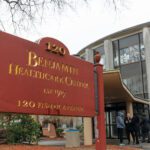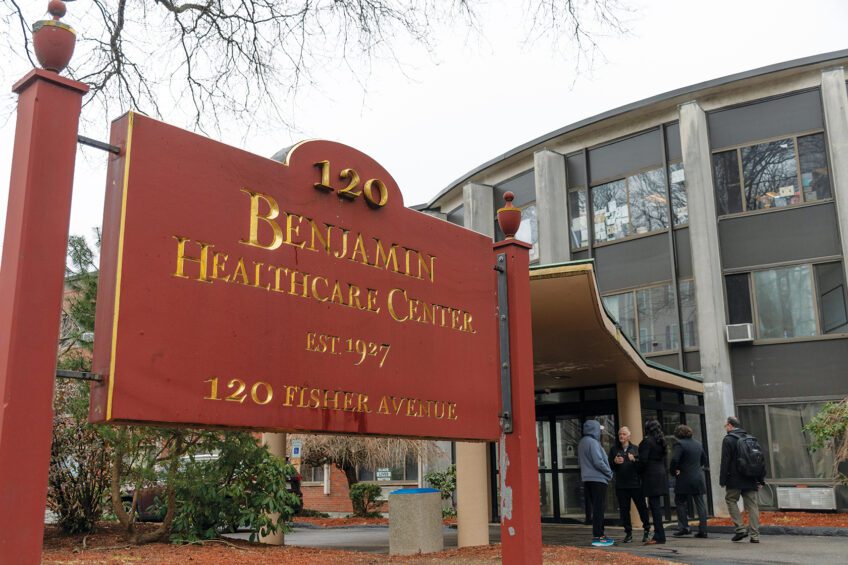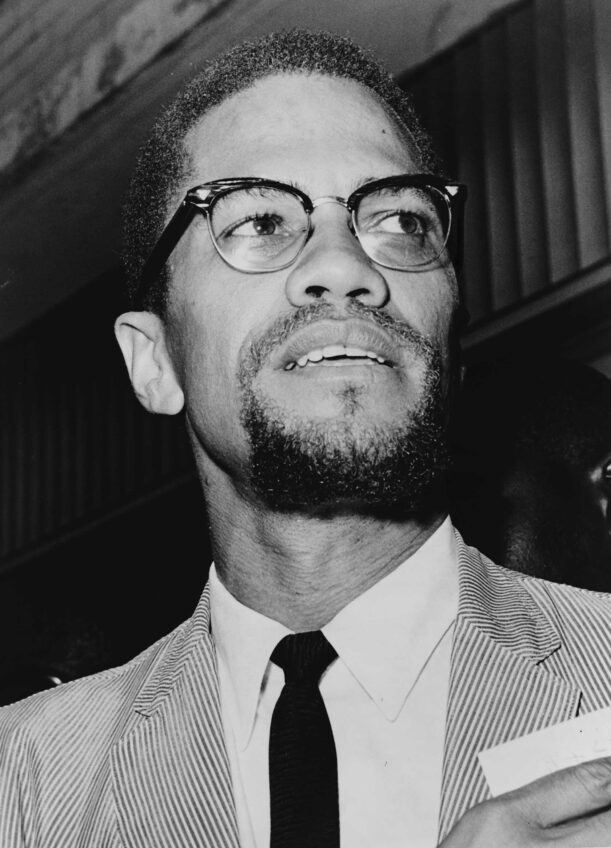
For much of the last 50 years, the building that burned down Feb. 1 at the corner of Harold and Harrishof streets was home to the Holy Mt. Zion Church of Mt. Sinai. And for decades before, the building was home to a Hebrew school run by the Hebrew Alliance of Roxbury, Inc.
But the now charred remains of the building scarcely hint at the grandeur of the structure that once stood there — the Horatio Harris villa, an 1857 brick gothic revival manor house on a 28-acre estate that was one of the most majestic in 19th century Roxbury.
Harris, a prominent Boston merchant whose name now graces the park bounded by Harold, Townsend and Munroe streets and Walnut Ave., built the estate with a pond, apple orchard, green houses, stables and ornamental trees and shrubs.
Harris, who was born in Dorchester in 1806 and owned a prominent auction house in Boston, built his estate as Roxbury was transitioning from a rural town, with farms and country estates of wealthy Boston merchants, to a streetcar suburb. Founded in 1630, along with the Puritan settlements of Dorchester, Boston, Charlestown and Cambridge, Roxbury had remained a small agrarian community for much of its first 200 years.
But by 1846, Roxbury had taken on a more urban character, incorporating as a city. In 1854, the western portion of the city seceded, incorporating as the town of West Roxbury and taking with it the land from present day Franklin Park, Jamaica Plain and Roslindale.

City of Boston map showing Harris Estate in 1874.
When Harris built his home in 1857, the highlands section where he settled still retained its rural character with Walnut Avenue and Warren streets the main thoroughfares in the vicinity of Harris’ estate. Few of the present-day streets that crisscross that section of Roxbury were laid out at the time. The pond on the Harris estate occupied an acre of land between present-day Harold, Holworthy and Waumbeck streets. It fed a small stream that ran parallel to where Waumbeck is today. A modest stone observation tower overlooked the pond.

Pond and observation tower on Horatio Harris estate.
“It was like a private park,” says Stephen Jerome, a Roxbury Historical Society member who has researched the history of Harris and his estate.
Roxbury in transition
Roxbury was incorporated into the city of Boston in 1868, and with the advent of horse-drawn trolleys that connected the neighborhood to downtown, was transforming into a streetcar suburb.
The neighborhood was still upper middle class and wealthy, Jerome says.
“Only the elite and upper middle classes could afford to commute,” he notes. “Horse-drawn street cars were expensive, compared to mass transit.”
Before Harris died, he appeared to have begun breaking up parts of his estate for development. He established a city park, Fountain Square just across Townsend Street from his manor house. The park, with large glaciated outcrops of Roxbury pudding stone, would have been prohibitively expensive to build on.
Harris’ largess had a degree of enlightened self-interest.
“Giving a park to the city was a way of boosting the value of the real estate around it,” Jerome says.
In 1916, Fountain Square was renamed Horatio Harris Park, after the landscaping firm founded by Frederick Law Olmstead made improvements.
The development of the land around the park would be left to his sons in law. Harris died in 1876 with the families of his two daughters inheriting his estate. By 1884, streets were laid out through the Harris estate but most were not named and few houses were built. Two large houses on Walnut Avenue faced the Fountain Square park and two were built on Munroe Street.
By 1894, the Harris manor house was described as “one of the largest and most elegant buildings in Boston” by The Bostonian, an illustrated monthly magazine. The building, however, essentially functioned as a Victorian-era recovery house operated by Baker-Rose Gold Cure Company of Massachusetts, which prided itself on offering the “scientific treatment and cure of the liquor, opium, morphine, cocaine and tobacco habits.”
By then Harold Street had been laid out, running just 10 yards from the manor house. The Fountain Square park investment paid off handsomely, with Harriswood Crescent — 15 Tudor Revival row houses still standing today — facing the park.
Brick row houses now faced Humboldt Avenue. The streets cutting through the former Harris estate were now named: Hollworthy, Harrishof, Waumbeck, Howland. Large Victorian homes began filling in the lots.
In 1901 the elevated Orange Line train connected Dudley Square to downtown Boston, with electric trolley service on major Roxbury thoroughfares. Boston’s wealthy class moved further out, reaching into suburbs such as Milton and Newton. The city’s growing middle class made inroads into Roxbury.
In the early 1900s, Jewish people began moving into Roxbury, mixing with the predominantly Yankee population. By 1915, the Harris manor house was owned by the Hebrew Alliance of Roxbury, Inc.
In the first 300 years of the Puritan settlement, town history and city life of Roxbury, the black population there was negligible. Boston’s small black population for years lived on the north slope of Beacon Hill. But as the black community moved into the South End neighborhood in the early 20th century, middle class blacks began to move into Roxbury.
By 1931, Harriswood Crescent was home to three black families: Otto and Muriel Snowden, founders of the Freedom House organization, the Washingtons and the Parnells.
“By the 1930s, Roxbury was where the African American elite lived,” Jerome says.
The Harris manor continued operating as a yeshiva, but in the 1940s, the upper two floors were shorn. By the time the building was acquired by the Holy Mt. Zion Church of Mt. Sinai, an addition had been built. The addition was not damaged by the Feb. 1 fire.






